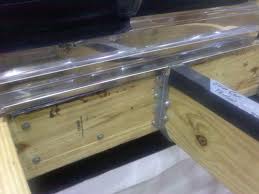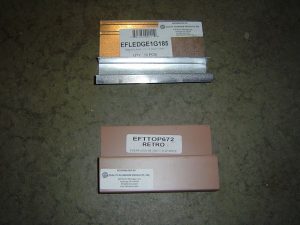How to Install Flashing on a Deck that is Already Built
By Mark J. Donovan
|
|
Question on how to install flashing on a deck already built:
We are in the process of selling our house and the deck has already been built. The inspector stated that we needed to install deck flashing between the house and the deck. I have reviewed deck flashing information but wonder, for those of us who are not mechanically inclined, how hard is it to install deck flashing and approximately how much does it cost? |
Can you buy deck flashing in any hardware store? The siding on the house is Hardboard. Will it be difficult to get behind the home siding (since everything I have read states to put the deck flashing about 3 inches behind the siding).
|
Will the home siding have to be removed or can the deck flashing just be slid up behind the siding? I cannot seem to find a picture anywhere of what deck flashing looks like. Answer: When installing a new deck onto your home it is critical to install deck flashing between the home and the deck. |
 |
Not installing deck flashing will leave your home susceptible to water, mold, and insect damage as rain run off will seep behind the deck ledger board and up against your home.
Read this article on improper deck flashing installation and resulting basement water problems. The deck can even suffer catastrophic failure and rip away from the deck if deck flashing was not installed or installed incorrectly. It happens every day in the United States.
| Deck flashing by itself is inexpensive. Usually it comes in rolls 6-10 inches wide and you should be able to get it at any home improvement store.
There is also a Z-shaped deck flashing type that is sometimes used, but you really should use the rolled stuff as it is wider and will allow you to extend it up further behind the siding. |
 |
Pressure Treated Decks and How to Install Flashing on a Deck
If your deck is constructed out of pressure treated lumber you should use a copper based deck flashing to prevent the deck flashing from corroding.
Today, pressure treated wood is impregnated with higher percentages of copper than in the past. Older types of flashing made from aluminum or galvanized metal will react with today’s treated lumber and actually corrode over time.
Get free quotes from local deck contractors.
Installing deck flashing is not that difficult to do, even if the deck is already built. You will need to remove a deck board, or a section of deck boards pending if the deck boards run parallel or perpendicular to the deck ledger board.
| Installing Deck Flashing
The deck ledger board is connected to the the house. The deck joists tie into it and support the decking boards. You will need to remove some of these decking boards near the house, and slide the deck flashing up underneath the first layer of siding that is nearest to the deck surface. The deck flashing then rolls over the edge of the ledger board, and the deck boards rest on top of it. This way water that gets behind the deck boards, nearest the house, does not slide down behind the ledger board, but instead rolls around the outside edge of the ledger board and drips onto the ground. |

See this Deck Installation Checklist Guide to make sure you hire the right deck contractor. |
Also, make sure nails are not punched through the deck flashing so that it defeats the purpose of it. Sometimes to achieve this you may need to put in an additional joist to act as a nailer for the reapplied deck boards.
For help on building a deck and how to install flashing on a deck, see HomeAdditionPlus.com’s Deck Installation Bid Sheet. The Deck Installation Bid Sheet will teach your how to hire the right deck contractor, and help to ensure that your deck project is completed on time and budget.
Related Information
- How to Install Deck Flashing
- Deck Flashing and Ledger Boards
- Basement Water Problems due to Improper Installation of Deck Flashing
Additional Deck Building and Design Resources
 |
 |
Get Free Deck Building Price Quotes with No Obligation!
Fill out our 3-5 minute quick and easy form, and receive a free price quote on decks from one of our pre-screened and licensed deck contractors. This process is free and there is no obligation to continue once you receive your decks price estimate.
